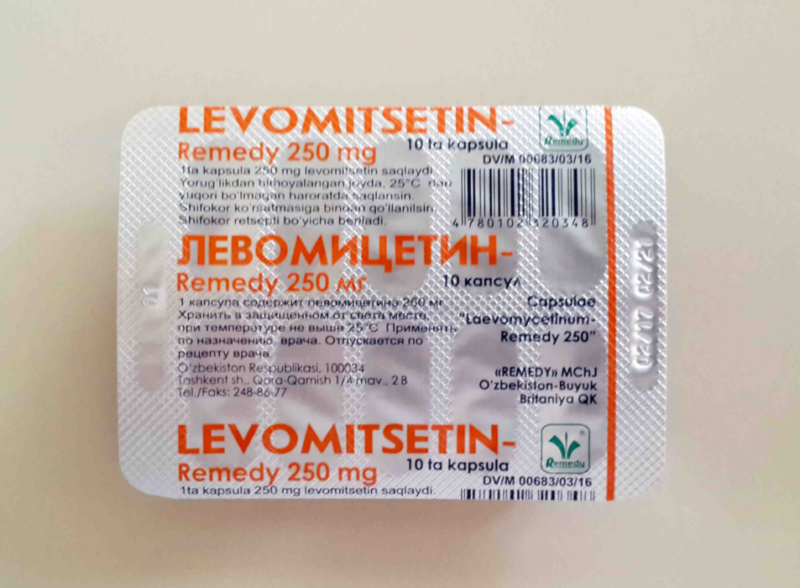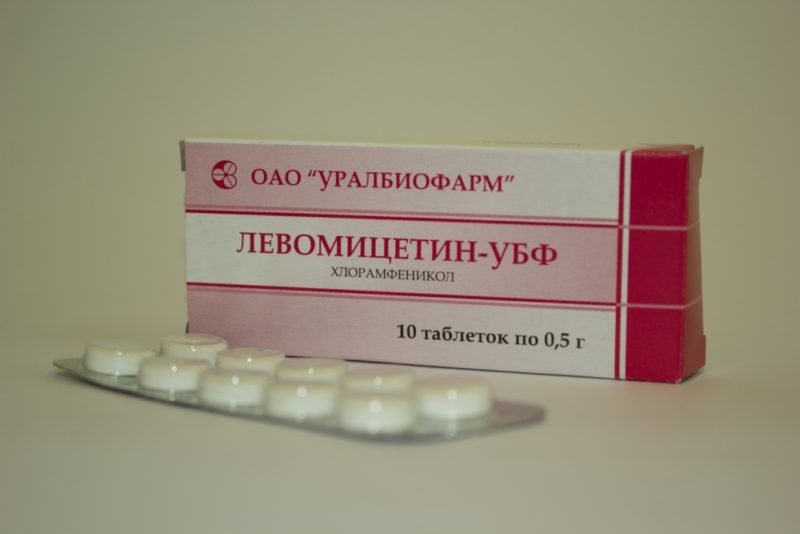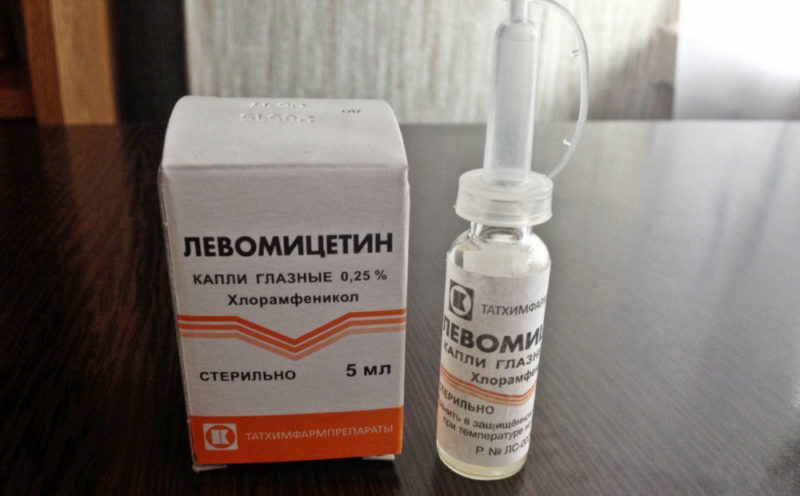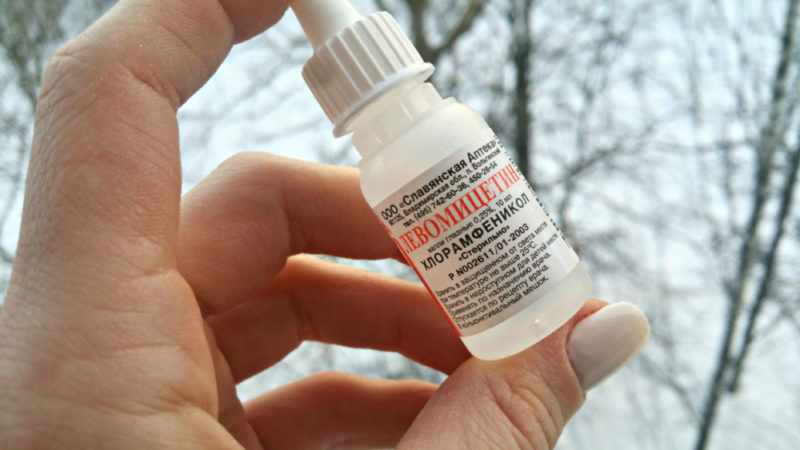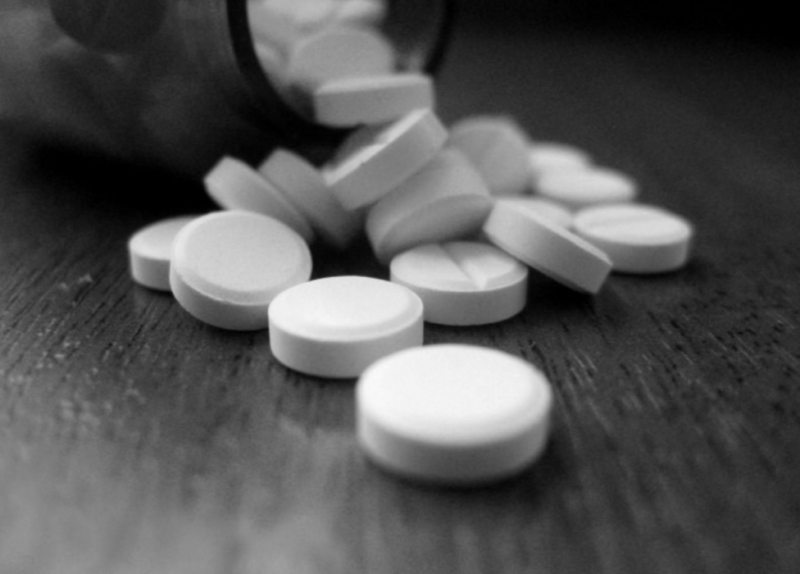Chloramphenicol is an antimicrobial that has cured severe infections for more than half a century. Resistance of pathogens to it is produced extremely slowly. However, the compound itself can be dangerous. Therefore, it is important to understand the following questions: What is Levomycetin prescribed? What dosage size is considered optimal? And what threatens the development of adverse reactions?
Material Content:
- 1 Composition and release forms
- 2 Pharmacological properties and pharmacokinetics
- 3 What helps chloramphenicol
- 4 Instructions for use and dosage
- 5 During pregnancy and lactation
- 6 Drug interaction
- 7 Compatibility of chloramphenicol with alcohol
- 8 Contraindications, side effects and overdose
- 9 Analogues of the drug
Composition and release forms
Chloramphenicol is the basis of all funds with the name Levomycetin. It is an extremely toxic white powder with a very bitter taste. The crystals of the substance are well soluble only in alcohols and pyridine. Given these features, the pharmaceutical industry has produced on its basis external drops and solutions, as well as funds for internal use.
- Tablets are round or oblong tablets. Possible dosage is 250 and 500 mg. In each instance at the kink, the active core is visible. The surface is covered with an enveloping layer. Inside, calcium is used as a filler in the form of stearate, MCC, hyprolose and crospovidone. The composition of the surface includes macrogol, titanium dioxide, as well as talc.
- The solid form marked Actitab is a two-layer tablet that slowly dissolves and, therefore, last longer.Among them, the above two types of dosages are found. The contents of the pill begins to dissolve only in the stomach. The layers are coated with water resistant varnishes based on indigo carmine. At the break, the contents are white. Surface - with a blue tint.
- In a bottle with eye drops contains 0.25% of the active substance. The solvent and excipient is boric acid. The remaining volume of the vial is filled with pure water.
- Alcohol solution is intended for external treatment of affected surfaces. It is poured into dark glass containers. The concentration of the drug may be 1, 3 or 5%. The rest is 70% alcohol. Two types of bottles are available: 25 and 40 ml.
Regular tablets have the longest shelf life - 3 years. Actitab dragees and eye drops are stored for up to two years. The period of use of the external solution expires one year after manufacture.
Pharmacological properties and pharmacokinetics
Chloramphenicol is a chemically synthesized antibiotic. It is an analogue of natural chloramphenicol, which was originally found in the isolation products of bacteria of the genus streptomycetes.
Able to interrupt the synthesis of microbial protein, thereby stopping the reproduction of pathogens. It acts on a wide range of microorganisms: Escherichia coli and Haemophilus influenzae, causative agent of dysentery, meningitis, salmonellosis, typhoid fever, gonorrhea, leptospirosis. Heals purulent infections. Effective against rickettsia, chlamydia, neiseria, spirochetes and some large viruses.
Stops the growth of penicillin, sulfanilamide and streptomycin resistant strains. It is destroyed at pH> 10, therefore it does not affect bacteria resistant to acidic conditions: Mycobacterium tuberculosis, Pseudomonas aeruginosa, Clostridia, protozoa and fungi.
Pathogens rarely adapt to the antibiotic itself, and therefore, resistance to it develops slowly.
When using the drug in the form of tablets, 80% of the substance is absorbed from the prescribed dose, half of which forms strong bonds with blood proteins. Peak plasma concentrations of chloramphenicol are detected no later than three hours after the administration of the drug.
The medicine easily overcomes physiological barriers. From the mother’s blood, one third to 80% of the compound enters the bloodstream of the fetus. In a nursing woman, the compound is found in milk. A third of the chemical enters the bile. The main part penetrates the kidneys and liver. It enters the spinal substance, as well as other tissues and body fluids.
Most of the drug is excreted along the path of hepatic metabolism and renal filtration. Ten percent is decomposed in the intestines by the action of flora.
When installed in the eye, the drug is well absorbed into the tissue. Drops accumulate in the vitreous, iris, aqueous humor and cornea. Part of the drug enters the bloodstream and is disposed of in the urine.
The study of the dynamics of the behavior of the solution when applied to the skin was not conducted.
What helps chloramphenicol
Indications for use are based on the pharmacological properties of the drug. An antibacterial agent is used in the treatment of infections caused by pathogens susceptible to it.
Each dosage form has its own list of diseases:
- The usual solid dosage form, as well as sustained-release tablets: dysentery, typhoid fever, salmonellosis, paratyphoid, brain abscess, meningitis, brucellosis, typhus, lymphogranulomatosis, rickettsiosis, trachoma, chlamydia, pneumonia, purulent otitis media, purulent peritonitis, and urine infections ways.
- Eye drops: conjunctivitis, blepharitis, keratitis.
- External solution: infected burns, pressure sores, purulent wounds, boils, carbuncles, superficial and deep bacterial skin lesions, purulent otitis media.
The variety of forms allows you to choose the best treatment option.
Instructions for use and dosage
Chloramphenicol is an extremely toxic substance. The most dangerous complication from its use is aplastic anemia - a disease characterized by the destruction of blood cells and leading to death.
According to various estimates, the likelihood of such a complication is from one case per 6000-45000 applications.
With local use, the drug enters the bloodstream in small doses, which minimizes the likelihood of serious consequences. However, all this indicates that compliance with the prescribed standards is essential.
Pills
The time of taking the drug depends on the well-being of the patient. If the medicine is well tolerated, the dragee is swallowed half an hour before a meal. In case of nausea or vomiting, an hour before the pill, you need to eat.
In terms of the minimum dose, adults take one to two tablets at a time. No more than 2000 mg of the active compound is allowed per day. A single dose is taken every six or eight hours.
For children over three years of age whose body weight exceeds 20 kg, there are two methods for calculating a single dose based on weight:
- In the first case, the number of kilograms is multiplied by 12.5 mg. Thus, a norm is obtained that must be taken every six hours.
- In the second embodiment, the mass in digital terms is multiplied by 25 mg. The estimated dose is used at intervals of twelve hours.
Treatment with the drug forces to control the amount of active substance in the blood in children.
All patients undergo therapy for 8-10 days.
An abbreviated course is prescribed in the treatment of ordinary intestinal infections caused by poisoning of poor-quality food. In this case, chloramphenicol from diarrhea is taken on a minimum dosage tablet every 6 hours. If after one or two doses the diarrhea has stopped, then the therapy should be stopped.
Ointment
Ointments with the active substance are available under other names. Among the external products with the name “Levomycetin” you can find an alcohol solution of various concentrations.
The disinfectant is used from the second year of life. A cotton swab is impregnated with the solution, which subsequently treats the infected surfaces. The medicine can be applied up to three times a day. It cleanses the wound from purulent formations and promotes rapid healing.
The instruction allows you to instill a solution in the ear with purulent otitis up to three drops no more than twice a day.
The duration of treatment is affected by the dynamics of recovery.
Eye drops
Eye drops of chloramphenicol 0.25% begin to be used from the second month of life. All, without exception, are prescribed to inject one drop in the conjunctival sac up to four times a day.
Without the prescription of a doctor, this tool can be used no longer than three days. In other cases, a specialist will give recommendations on the duration of treatment.
Chloramphenicol Actitab
The regimen for taking regular tablets and Aktitab tablets is not different.
During pregnancy and lactation
The medicine easily penetrates many body fluids and tissues, including crossing physiological barriers. Since it has a high toxicity, it is forbidden to take it during pregnancy and lactation.
Women belonging to these categories are even contraindicated in external forms of the drug.
Chloramphenicol is absorbed into the tissue and through the outer integument partially penetrates into the bloodstream.
Drug interaction
With the internal administration of the drug, the following patterns should be considered:
- sulfonamides, cytostatics and myelotoxic drugs increase the negative effect of the substance on the hematopoiesis system;
- in the presence of the drug, the concentration increases and the excretion of phenobarbital, phenytoin and blood-thinning agents slows down;
- erythromycin, penicillin and cephalosporin lose their effectiveness during treatment.
Sulfanilamides are contraindicated even when using eye drops.Their interaction can lead to the decline of the hematopoietic system.
The combination of an alcohol solution with other drugs has not been studied.
Compatibility of chloramphenicol with alcohol
When drinking alcohol during treatment, toxic substances are released into the bloodstream that cause poisoning. A similar reaction is manifested by nausea, vomiting, facial flushing, heart rhythm disturbance, rapid breathing and a drop in blood pressure.
Treatment requires abstinence from taking “strong” drinks.
Contraindications, side effects and overdose
The medicine in all forms is used with caution in relation to patients who have previously received radiation therapy.
In other cases, it is contraindicated:
- with non-infectious skin lesions, including autoimmune nature;
- patients with inhibited renal or hepatic function;
- people with disorders in the hematopoietic system, as well as those patients who may have strong reactions to the components of the drug.
Due to the high toxicity of the drug, inside Levomycetinum children under three years of age are prescribed only for health reasons. Local funds are prescribed to newborns when it is impossible to pick up other drugs.
Subject to compliance, local application can provoke only allergic reactions. Long-term treatment with high doses can lead to more serious consequences in the form of impaired blood formation.
Negative reactions to chloramphenicol tablets are more diverse. Among them are:
- inhibition of intestinal flora;
- irritation of the gastric mucosa;
- stomatitis;
- nausea and vomiting;
- change in blood count;
- nervous disorders, inflammatory lesions of the optic or auditory nerve;
- rash, Quincke's edema, headache, fungal infection.
With an overdose of oral forms, mortality is 40%. The characteristic signs of this condition are gray skin color, intestinal disorders, respiratory depression, decreased reaction to external stimuli, loss of consciousness, deep pathologies of the kidneys and liver, and damage to the blood formation system. To save the patient, a hardware blood purification is required. Further drugs are selected according to the symptoms.
Analogues of the drug
The only agent with an identical composition is Syntomycin. It can be found in the form of liniment (concentrated ointment) and vaginal suppositories.
Chloramphenicol is added to many other external drugs (Levomekol, Olazol, Levosin, Levomethyl, Cortomycetin, Candibiotic). However, in these medicines it is not the only active substance. The active complexes include other antibiotics, antifungal, as well as painkillers. This means that such drugs will have a different therapeutic effect.
Chloramphenicol plays a large role in the fight against dangerous infectious diseases. During therapy, pathogens do not have time to adapt to it, which improves the quality of treatment. However, the high toxicity of the drug requires special care in handling it.


